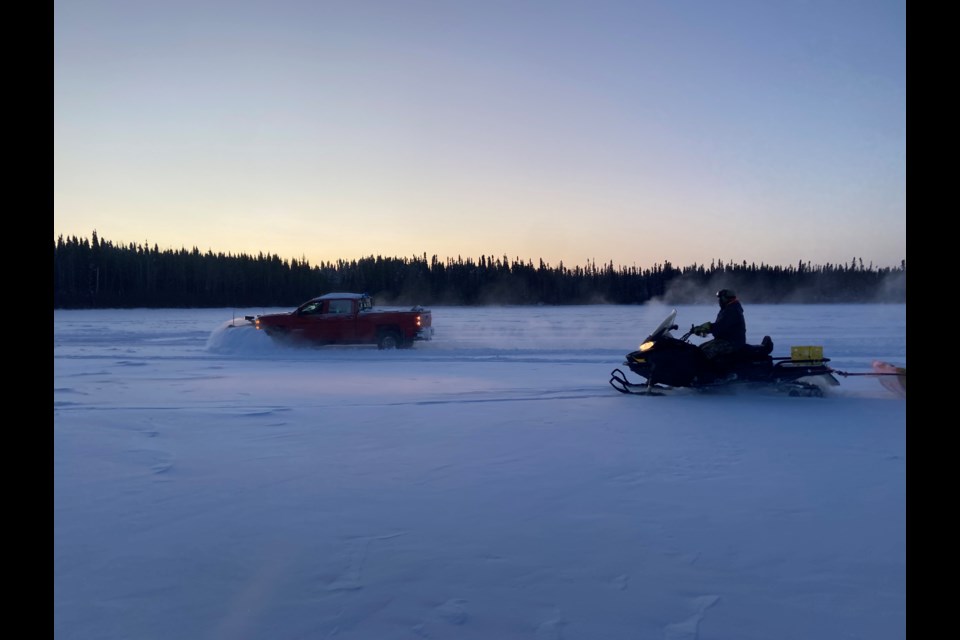The time window for essential winter roads to stay open for First Nations in the Northwest is getting shorter.
The higher than normal winter temperatures in the region are creating challenges in building winter ice roads, said Roy Fiddler, the project manager in charge of building winter roads for Muskrat Dam First Nation.
Fiddler said the roads are about two or three weeks behind where they should be at this time of the year.
“By this time on any normal or a better season, semi-trucks would be rolling in now with gas, fuel, housing materials,” he said in an interview on Friday. “We'd be open for all kinds of traffic, but right now there's only a few small trucks that are on, because it's just too rough. The ground is somewhat frozen but there's a lot of rock.”
Fiddler said they started preparations in November when they begin packing down the road with snowmobiles, but the weather then turned warm in December.
“It's been warm. Like, today, the sun is shining, the birds are singing and it's, like, -12 C and usually we should be -25 C,” he said.
Fiddler said it’s a critical point now being well into mid-January.
“There are two other communities to the north of us that depend our ice crossing here,” he said. “They had to fly in their gas a couple of days ago. [The] flown-in cost for a litre of gas for them is $4.
Fiddler said the ice roads are critical for these communities to bring in materials for projects for the year.
“Whether it's housing or bigger school or community complex projects, [etc.], you only have that window [of the fully opened ice road] otherwise after March, everything has to be flown in,” he said.
Fiddler said about 90 centimetres of ice are required for a semi to use the road.
“We are almost [25-30 centimetres] below that at this time,” he said. “And we've noticed over the years of doing this, by February, the ground and water temperatures change to start thawing.”
“Looking at the long-range weather forecast, for the next two weeks anyway, we're looking at the same temperatures, mid-teens around there. We're getting quite anxious up here.”
Fiddler said they’ve done what they can at this point and it’ll be up to mother nature to harden up the ground and allow the road to fully open.
“We sit along the Severn River and we have to cross that river. It's about a mile and a half wide, and in that river we have three active currents. Normally at this time we should be nearing [60 centimetres] of ice,” he said.
“Two days ago, we did our ice checks and we're just over that [50 centimetre] mark. Last year at this time we had our first semi truck [cross] with a quarter load of gas. Today we are nowhere near that.”
He said the roads usually shut down at end of March, because it’s when most trucking company’s ice road insurance runs out.
“It gets more challenging every year and I'm working with the governments on this issue as well,” he said. “It gets harder because of the warmer climate. It's been going up like that every year. It's not getting any colder.”
— NWOnewswatch.com




